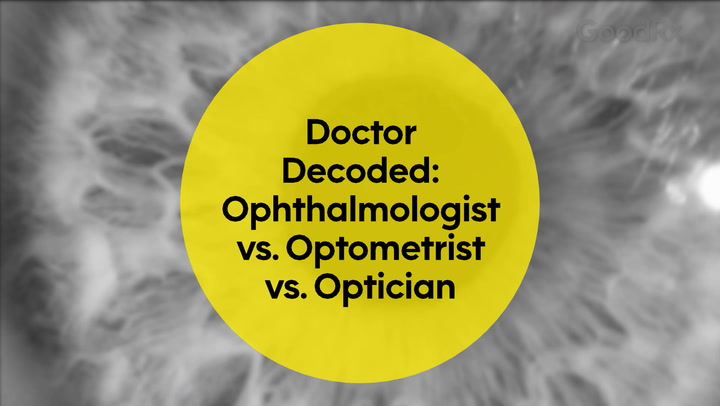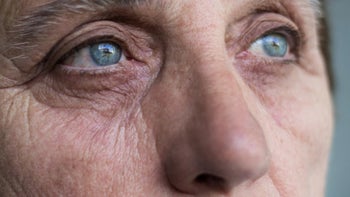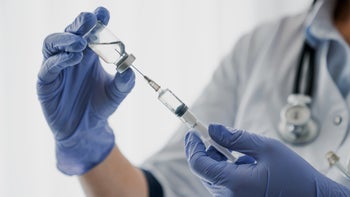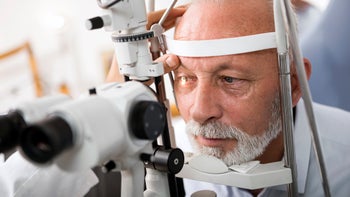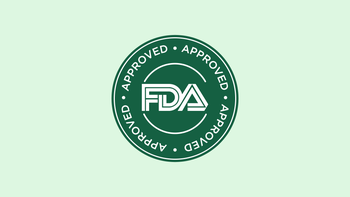
Need Eye Injections? How to Prepare for anti-VEGF Intravitreal Injections
Key takeaways:
Anti-VEGF eye injections (also called intravitreal injections) are medications that can treat wet macular degeneration, branch retinal vein occlusion, and diabetic eye diseases such as macular edema
Eye injections may sound scary, but they actually aren’t painful.
Medications commonly used in anti-VEGF eye injections include Avastin (bevacizumab), Eylea (aflibercept) and Lucentis (ranibizumab). You may need several injections to see full results.

If your eye doctor recommends eye injections as part of your treatment plan, it’s natural to feel some anxiety. The idea of a needle going into your eyeball is unsettling, to say the least.
But eye injections — also known as intravitreal injections — could save your vision if you have certain conditions, such as macular edema from macular degeneration, retinal vein occlusion, or eye-related complications from diabetes. Eye injections are effective, and, you’ll be relieved to hear, they are not painful.
Here’s what you need to know about how intravitreal injections work and how to get ready for your procedure.
Save over 40% on Qsymia with GoodRx
Discover the once daily Qsymia for weight management. Qsymia is for adults and children 12-17 in combination with a healthy diet and regular exercise.

What eye condition do anti-VEGF eye injections treat?
Injections are often used for anti-vascular endothelial growth factor (anti-VEGF) therapy. Anti-VEGF injections can treat several eye conditions, including:
Myopic choroidal neovascularization (a complication of severe nearsightedness)
These conditions have one important thing in common: they cause new blood vessels to grow in the back of the eye. These blood vessels shouldn’t be there and they’re very fragile. So they break and leak easily, which leads to swelling and vision changes. Without treatment, this can cause permanent vision loss.
Anti-VEGF medications stop these blood vessels from growing and keep them from coming back. Common anti-VEGF medications include:
Studies show that many people who receive anti-VEGF medications have vision improvement. But these medications are only available as injections.
How do you prepare for anti-VEGF eye injections?
There’s nothing special you need to do to get ready for an anti-VEGF eye injection. But you should wear glasses, not contact lenses, to your appointment.
Anti-VEGF medications are injected directly into your eyeball. The medicine goes into the vitreous, which is the clear gel that fills the back part of the eye.
Here’s what to expect when you go in for eye injections:
You’ll sit in the exam chair, which will be moved into a reclined position.
You’ll get eye drops to numb your eye so that you don’t feel any pain.
Your eyelids will be cleaned and you’ll be given an antiseptic eye drop to prevent infection.
Your eye doctor will place a speculum in your upper and lower eyelids to keep your eye open.
You’ll be asked to look in a specific direction and your eye doctor will inject the medication into the white part of your eye. The injection takes between 10 and 20 seconds.
The entire process takes about 5 minutes. You may feel some pressure during the injection, but you won’t feel any pain. If you’re not too squeamish, you can watch a video of someone receiving an anti-VEGF injection by clicking here, courtesy of the publication Review of Optometry.
How many anti-VEGF eye injections do people need?
Getting an intravitreal injection isn’t a one-time thing.
You will likely need injections every month for several months. If you’re responding well to the medication, your eye doctor may start to space out injections more. The total number of injections you need will depend on how well your vision recovers.
Some people need eye injections for the rest of their lives, and some can stop getting them after a few months. It’s impossible to predict how well a person will respond to eye injections, but there’s some data that shows people with macular degeneration usually need 6 to 8 eye injections per year.
What are the risks of anti-VEGF eye injections?
Eye injections are a common and typically safe procedure. But, like any medical procedure, they come with risks. These include:
Pain after the injection
Bleeding
Endophthalmitis (a serious eye infection)
Eye inflammation
Increased eye pressure (or worsening of glaucoma)
Complications after an eye injection are rare. Studies show that the risk of retinal detachment and endophthalmitis is less than 1%. If you are worried about complications, talk to your eye doctor. You may be able to try other treatment options before getting anti-VEGF eye injections.
How do you care for your eye after an anti-VEGF eye injection?
Here are a few tips to follow to keep your eye healthy after an intravitreal injection:
Avoid rubbing your eyes. You should also stay away from areas with a lot of dust, pollen, or particles, so that you don’t get anything into your eyes that could prompt you to rub them.
Use artificial tears to keep your eyes moist and comfortable.
Don’t wear contact lenses until your eye doctor gives you the all clear to start wearing them again. Most people start using them again after 3 days.
Avoid swimming, baths and immersing your head underwater for about a week (It’s okay to shower).
Keep using your other medications, including eye medications, as directed by your healthcare team.
Make sure to follow up with your eye doctor. They will need to examine your eyes to see if you are responding well to the treatment.
Don’t expect to notice vision improvement immediately after the eye injection. But stay optimistic. These medications take time to work and you may only notice improvement after several rounds of eye injections.
What side effects can you expect after an anti-VEGF eye injection?
Common side effects after an eye injection include:
Eye irritation: This can last a few hours and is usually caused by the antiseptic used in the procedure. Antiseptics can be irritating and make your eye feel gritty. Avoid rubbing your eyes though so you don’t accidentally get bacteria or small particles in them.
Eye soreness: You might feel some soreness for 1 to 2 days where the needle went into your eyeball or on your eyelids from being stretched by the speculum. You can take over-the-counter pain relievers to help with discomfort.
Red eyes: You may notice some redness on the white part of your eye after the injection. While this can look scary, it is harmless and will clear on its own.
You should call your eye doctor if you notice any symptoms that could be a sign of a complication. These symptoms include:
Vision changes (or loss)
Flashing lights
New floaters
Severe eye pain
The bottom line
Anti-VEGF eye injections can improve your vision if you have diabetic macular edema, wet macular degeneration, or certain other eye conditions. While eye injections — also called intravitreal injections — may sound intimidating, they are effective, relatively safe, and pain free. The entire procedure only lasts a few minutes and requires very little preparation. Most people experience few side effects and can get back to most of their regular activities right away.
Why trust our experts?


References
Bakri, S. J., et al. (2016). Branch retinal vein occlusion. The Foundation of the American Society of Retina Specialists.
Bauer, S., et al. (2020). Anti-VEGF injections: Start to finish. Review of Optometry.
Boyd, K. (2022). Eye injections. American Academy of Ophthalmology.
BrightFocus Foundation. (2021). Eye injections for AMD treatment: A retina specialist answers your questions.
Falavarjani, K. G., et al. (2013). Adverse events and complications associated with intravitreal injection of anti-VEGF agents: A review of literature. Eye (London, England).
Goldberg, R. A. (2015). How to prevent endophthalmitis after intravitreal injections. International Journal of Retina and Vitreous.
Leng, T., et al. (2023). Intravitreal injections. American Academy of Ophthalmology.
MedlinePlus. (2022). Eye.
Nago, J. (2012). Patient information — Anti-VEGF intravitreal injection treatment. Moorfields Eye Hospital.
NHS Ayrshire & Arran Department of Ophthalmology. (2016). Intravitreal injection.
Perez, D., et al. (n.d.). Myopic choroidal neovascularization. American Academy of Ophthalmology.
Tubert, D. (2019). Anti-VEGF treatments. American Academy of Ophthalmology.
Virgili, G., et al. (2018). Anti-vascular endothelial growth factor (anti-VEGF) drugs for diabetic macular oedema. Cochrane Database of Systematic Reviews.







